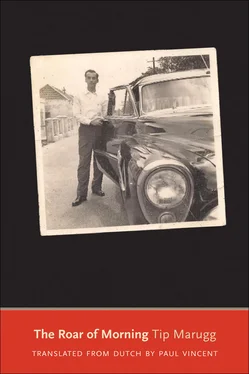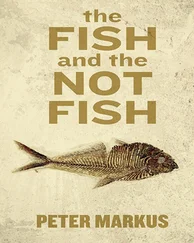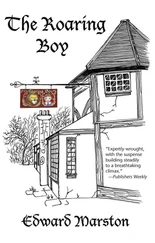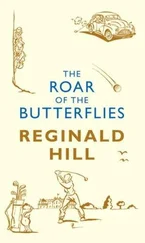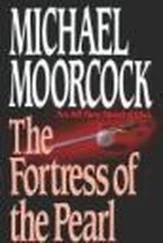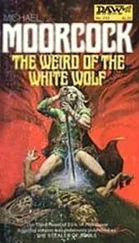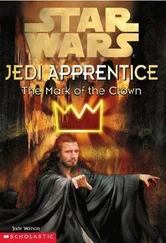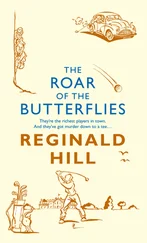Chimbarí turned out to be no more than a small village with a few hundred inhabitants. But I was impressed by several large and elegant though run-down buildings and by a magnificent church, a lofty structure with two square towers that reminded me of a medieval castle. Its thick walls had cracks in them caused by earthquakes. My uncle told me that Chimbarí had once been a prosperous little town, the seat of a Roman Catholic bishop, and that the church dated from the Spanish period. As we looked at it in the glow of dusk, the church seemed to be surrounded by a halo of dying light. My uncle called it “a temple of God that has withstood revolutions, earthquakes and the confessed sins of many generations.” The following morning we drove in an open carriage drawn by two horses to Sandoval’s farm, which was just outside the village.
Like most of his countrymen, Sandoval was short of stature, and he constantly wriggled his shoulders as though his shirt were uncomfortable. He had a big head and a broad, puffy face; his forehead and the loose, flabby skin on his cheeks shone as if they were coated with oil. Perhaps his head looked big only because he was so squat and had almost no chin. He was a very friendly man and I took to him immediately. His farm wasn’t that small. The spacious house was surrounded on three sides by a veranda, so that it was always cool inside. He had about twenty cows and more than two hundred goats. Everywhere there was a fresh and distinctive smell that was very different from the city.
I went for long walks in the surrounding countryside and spotted many plants, trees and birds I had never seen before. I often went into Chimbarí, where I got the impression that no one worked, because everywhere in the village there were groups of men sitting in front of houses, under trees or in the bar. Once I went into the church with a boy from the village to see the carved wooden Madonna on a side altar, the Madonna of the Sad Face, whose eyes sometimes filled with tears that rolled down her cheeks and dropped onto an oak plank that had been attached to the base of the altar. The inside of the church was quite bare, the Madonna was not beautiful and I couldn’t see any tears. The statue was in the habit of weeping during Lent, the boy told me, and at that time visitors often came from the towns to look at the Holy Virgin, to buy a candle and to light it on the little altar while praying for her intercession. Only a few of them had been fortunate enough to see the Madonna weeping, he added, but the stains of the fallen tears were clearly visible at the foot of the statue.
One afternoon I went into the bar for a glass of coconut milk. The place was packed and every so often the crowd of customers would howl or start applauding. Five men were playing a game that was being enthusiastically followed by everyone present, accompanied by a lively commentary. After watching intently for at least a quarter of an hour I still had no idea what was going on. It took a whole hour and an explanation by two strapping youths for me finally to understand, but even then I found it a silly game because none of the players wins or loses.
The game was called simply “date stones.” Four men played, plus a questioner. The questioner was always the same person, a tiny, shrivelled old man who puffed constantly on a pipe that emitted clouds of evil-smelling smoke. He had a high-pitched voice like that of a toddler. I thought that was odd: a centenarian with the voice of an infant. He asked questions that had to be answered by the players in turn. At the start of the game the old dodderer had twenty-one dried date stones clutched in his right hand. If his question was answered correctly, he would lean forward and drop a date stone into the respondent’s breast pocket. If someone did not know the answer or answered incorrectly, the same question was put to the other three players. If they did not know the answer, no one got a stone. In that case the old boy would turn to the audience, and if none of the spectators could answer either, he would beam with satisfaction and give the solution in vivid detail. If the spectators did know the answer, he would look sheepish and go quickly on to a new brainteaser. The old man went on asking questions until all the players had answered five correctly. Then he stood up rather defiantly, stretched out his arm and unclenched his fist to show everyone that there was nothing in his hand. Where was the twenty-first stone? That was what the game was all about and now the betting began. What had the old rascal done during the questioning? On an occasion when a player had answered correctly, he had slipped not one but two date stones into the man’s pocket. He was therefore the only one who knew which player had six stones in his pocket at the end of the game. All the bystanders then bet amongst themselves for drinks, cigarettes or money. Each punter chose two of the four players in the game. When all the bets had been laid, the old man gave the signal and the four players emptied their pockets. An earsplitting roar went up from the crowd and the man with the six stones was bought drinks by the winners.
The questions the old man asked were on all kinds of subjects. In what year did the Parce River dry up completely? Who defeated the Spanish general Annuire during the war of independence? When does the sun rise earlier, in May or September? Why is it dangerous to swim in the river on Good Friday? Sometimes there would be a series of questions on the same subject. For how long does a sow carry its young? How many young does a rabbit litter contain? Why does a rock snake sometimes not roll up at the approach of danger, but fold double instead? Sometimes the questions were about fruit. How many years does it take for a mango tree to bear its first fruit? When does the pith of a watermelon look yellow or even white, instead of red? Then he would move on to the Bible. How many children did Adam have? How many daughters did Adam have? How many sons did Noah have? How many livestock did Job have? Now and then he asked nonsense questions based on old wives’ tales and superstitions. What did the donkey say to the tortoise under the tamarind tree? What was the king of Spain changed into when he failed to attend mass on Easter Sunday? His questions about folk medicine were particularly interesting. An infusion of the leaves of which plant can be taken against dysentery when you have torn off the leaves with a downward movement, and against vomiting if you have pulled them off with an upward motion? The fisherman’s tobacco that grows on the rocks by the shore cures the clap, as we all know — after all, we’re all men together — but what other illness does it cure? What fruit, mashed with olive oil, must be given for piles? Name three emetic plants.
When I got back to the farm it was already dark. At dinner I told them about what I had seen in the village. Sandoval laughed heartily. Her Majesty smiled benignly, but my blessed uncle thought the game was ridiculous — the villagers should concern themselves with more useful matters. He found the biblical questions about the number of daughters, sheep and goats particularly inane. Sandoval told us that one of his cows was about to calve. That morning, when he had taken his cattle from their cowshed and driven them to the meadow, he had noticed that the cow with calf was moving sluggishly and looked listless. Later in the day he saw that the cow had moved away from the others and kept sniffing the fence. He decided to take her back with him and put her in the little shed he called the “maternity ward.” All day long, at regular intervals, he had gone to check on the cow, but she was still looking around in a daze. Calving could start any moment now. I said that I’d like to be present at the birth of a calf. Sandoval agreed immediately, but I expected my uncle to be against the idea. Although he did frown a little, he decided it would be a good idea for me to witness one of God’s miracles at close quarters.
Читать дальше
